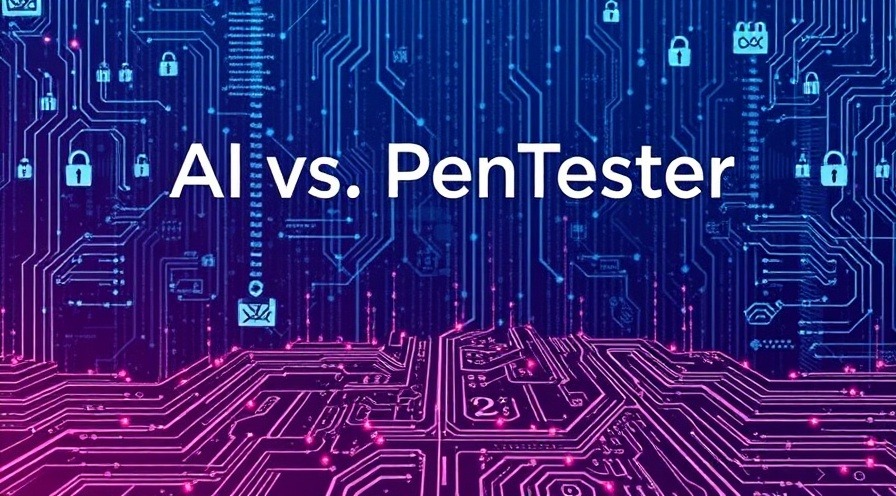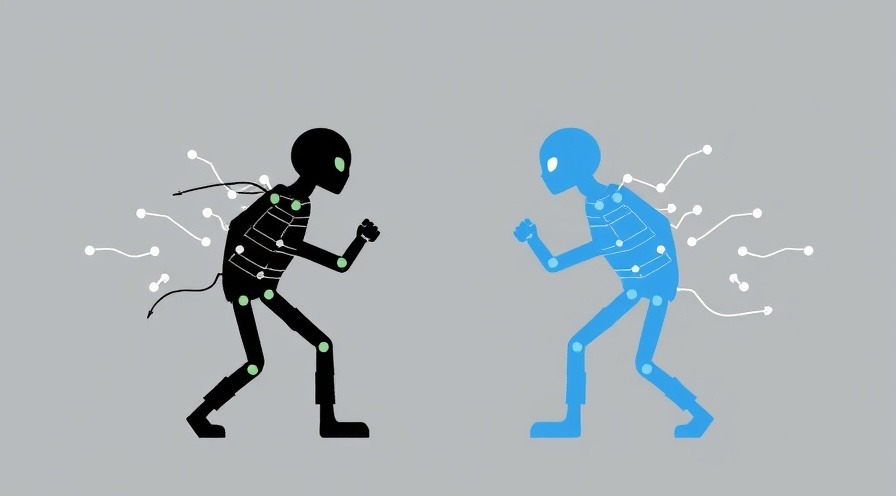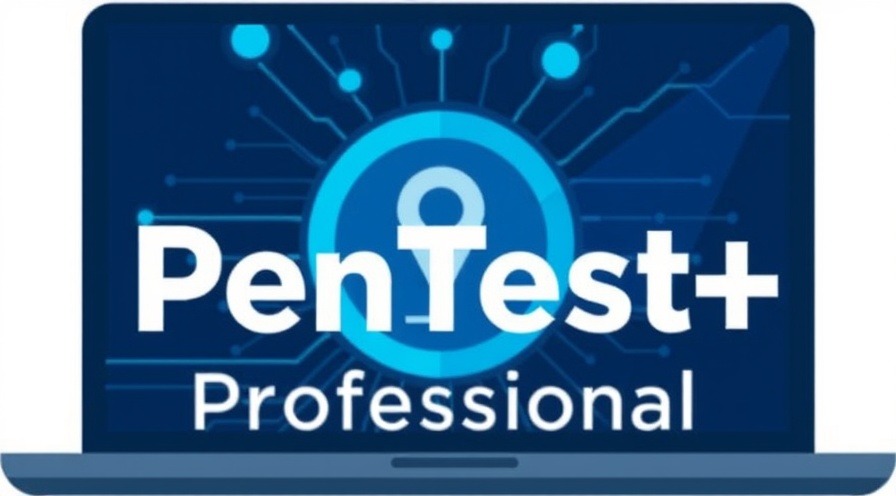
AI vs. PenTester: How Artificial Intelligence is Changing the Penetration Testing Landscape (and What PenTest+ Pros Need to Know)
The Security Showdown: Human Hackers vs. Silicon Brains
Picture this: It's 3 AM. While most security professionals are fast asleep, an AI-powered pentesting tool is methodically probing your network defenses, never tiring, never needing a coffee break, and never missing a potential vulnerability because it "had a long day."
Welcome to the new reality of cybersecurity, where artificial intelligence is dramatically reshaping the penetration testing landscape. For PenTest+ certified professionals, this isn't just another technical evolution—it's a fundamental shift that's redefining what it means to hack and defend in the digital age.
The AI Revolution in Penetration Testing
AI isn't just coming for penetration testing—it's already here, quietly transforming both offensive and defensive security operations across industries.
"The integration of AI into penetration testing represents the most significant paradigm shift in our field since the introduction of automated scanning tools," says Katie Moussouris, founder of Luta Security and renowned vulnerability disclosure expert. "We're witnessing the early stages of a complete transformation in how we approach security testing."
This transformation is happening on multiple fronts:
Automation on Steroids
Traditional automated scanning tools follow predetermined patterns and rules. AI-powered tools, however, can learn from past findings, adapt their methodologies in real-time, and prioritize vulnerabilities based on complex contextual analysis.
Tools like Fiddler AI and DeepExploit are demonstrating how machine learning can simulate sophisticated attack chains that previously required human creativity. They don't just identify isolated vulnerabilities—they can string them together into exploit paths that map to real-world attack scenarios.
As Marcus Carey, founder of Threatcare and former NSA analyst, puts it: "Today's AI tools aren't just finding the unlocked windows—they're figuring out which ones lead to the room with the safe."
Pattern Recognition That Puts Humans to Shame
One area where AI truly shines is identifying subtle patterns across massive datasets—something that would take human pentesters weeks or simply be impossible.
AI-powered systems can analyze millions of lines of code, network traffic patterns, or user behaviors to identify anomalies that might indicate vulnerabilities or potential attack vectors. This capability is particularly valuable for detecting novel threats or zero-day vulnerabilities that signature-based tools would miss entirely.
The Human-Machine Security Team
Despite these advances, the most effective approach to modern penetration testing involves teaming human experts with AI systems:
"AI tools are excellent at breadth and consistency, while human pentesters excel at depth and creativity," explains Jayson Street, VP of InfoSec at SphereNY. "The organizations having the most success are those that leverage AI for the grunt work while freeing their human experts to focus on the complex, nuanced aspects of security testing that still require human intuition."
This partnership approach allows security teams to cover more ground, test more frequently, and focus human expertise where it adds the most value.

New AI-Powered Attack Vectors: The Threats You Need to Know
As AI capabilities expand, they're creating entirely new categories of security concerns that PenTest+ professionals must understand:
Adversarial Machine Learning
One of the most fascinating developments is in adversarial machine learning—techniques designed to manipulate AI systems by exploiting how they process and interpret data.
"Adversarial attacks against AI represent a completely new frontier in security testing," notes Dr. Dawn Song, Professor of Computer Science at UC Berkeley and founder of Oasis Labs. "These attacks don't target traditional code vulnerabilities but instead exploit fundamental limitations in how machine learning models process information."
Examples include:
Model poisoning: Corrupting training data to make AI systems misclassify inputs or create backdoors
Evasion attacks: Subtly altering inputs to cause misclassification (like tricking image recognition by adding imperceptible noise)
Model extraction: Stealing proprietary ML models through carefully crafted queries
For PenTest+ professionals, this means developing a whole new testing methodology focused on AI system integrity.
AI-Enhanced Social Engineering
Remember when you could spot a phishing email from a mile away due to broken English or obvious scam markers? Those days are rapidly disappearing.
AI language models can now generate highly convincing, contextually appropriate content that makes traditional social engineering attacks far more dangerous. Deepfakes add another layer of complexity, enabling attackers to create convincing video and audio impersonations.
"The bar for creating convincing social engineering attacks has dropped dramatically," warns Rachel Tobac, CEO of SocialProof Security. "What once required significant skill and research can now be automated with alarming effectiveness."
Automated Vulnerability Discovery and Exploitation
AI systems are getting increasingly adept at discovering and exploiting vulnerabilities automatically. Tools like GPT-4 have demonstrated impressive capabilities in identifying security flaws in code and even generating exploit code.
This democratization of offensive capabilities means that attackers with minimal technical skills can now launch sophisticated attacks that previously required expert knowledge.

Essential Skills for the AI-Enhanced PenTest+ Professional
To stay relevant and effective in this evolving landscape, PenTest+ professionals need to develop new skills and adapt existing ones:
1. AI/ML Security Testing Fundamentals
Understanding the basics of how machine learning systems work, their vulnerabilities, and how to test them is quickly becoming a core competency for security professionals.
"Every pentester should have at least a foundational understanding of machine learning concepts and the unique security challenges they present," advises Phillip Wylie, founder of The Pwn School Project and veteran penetration tester. "You don't need to become a data scientist, but you do need to understand enough to effectively test AI-powered systems."
Key areas to focus on include:
Basic ML concepts and terminology
Common ML vulnerabilities and attack vectors
AI/ML security testing methodologies
Adversarial machine learning techniques
2. Advanced Automation Skills
As AI handles more of the routine aspects of penetration testing, human pentesters need to become experts at building, customizing, and managing sophisticated automation workflows.
This means developing skills in:
Python and other scripting languages
API integration
Custom tool development
Orchestration and workflow automation
"The most valuable pentesters today aren't necessarily those who can manually find the most bugs," says Alyssa Miller, Business Information Security Officer and noted security researcher. "They're the ones who can build intelligent automation that amplifies their expertise across much larger attack surfaces."
3. Threat Modeling for AI Systems
Traditional threat modeling approaches need adaptation for AI-powered systems with their unique attack surfaces and failure modes.
Effective threat modeling for AI requires understanding:
Data pipeline security
Model integrity protections
Explainability and transparency mechanisms
Ethical boundaries and safeguards
4. Data Analysis and Visualization
As penetration tests generate increasingly massive datasets, the ability to analyze and communicate findings effectively becomes crucial.
"A modern pentester needs to be part data scientist," explains Chris Nickname, Director of Offensive Security at SecureCorp. "The difference between an average report and an exceptional one often comes down to how effectively you can analyze patterns across thousands of findings and communicate the real business risk."

The Future of PenTest+: Human-AI Collaboration
Despite fears that AI might eventually replace human pentesters entirely, the reality is shaping up to be much more collaborative and nuanced.
"The future belongs to cybersecurity professionals who view AI as a partner rather than a competitor," says Chloé Messdaghi, security researcher and advocate. "Just as automation didn't eliminate the need for human pentesters, AI is creating an entirely new playing field where humans with the right skills are more valuable than ever."
The most effective penetration testing teams of the future will likely involve tight integration between human expertise and AI capabilities:
AI systems handling reconnaissance, initial scanning, and pattern detection across vast attack surfaces
Human experts guiding testing strategies, evaluating AI findings, and diving deep into complex vulnerabilities
Collaborative platforms facilitating seamless handoffs between automated and manual testing phases
Preparing for an AI-Enhanced Security Career
For current and aspiring PenTest+ professionals, the rise of AI in security testing represents both challenge and opportunity. Those who adapt and develop complementary skills will find themselves more valuable than ever in a rapidly evolving landscape.
As Jeff Moss, founder of DEF CON and Black Hat security conferences, puts it: "The intersection of AI and security isn't making human expertise obsolete—it's making it more essential than ever, just with a different focus. The pentester who embraces AI as a force multiplier rather than a threat will thrive in this new era."
The security landscape continues to evolve at breakneck speed, but one thing remains constant: the need for skilled professionals who can think creatively, adapt to emerging technologies, and stay one step ahead of potential threats. By embracing AI as a powerful ally rather than fighting against the inevitable tide of progress, PenTest+ professionals can secure their place at the forefront of cybersecurity for years to come.
So the next time you find yourself matching wits with an AI security tool, remember: it's not man versus machine—it's man and machine versus the problem. And in that partnership lies the future of effective penetration testing.
 Add Row
Add Row  Add
Add 




Write A Comment